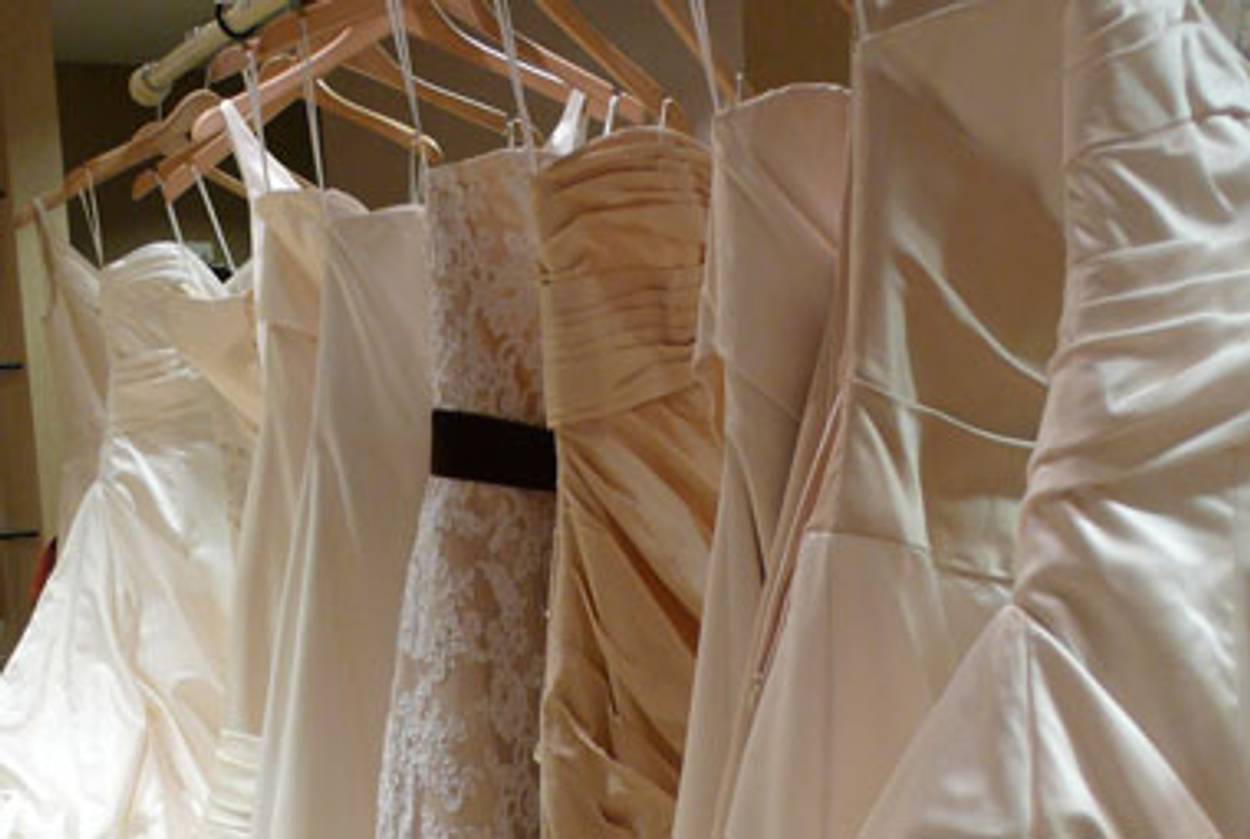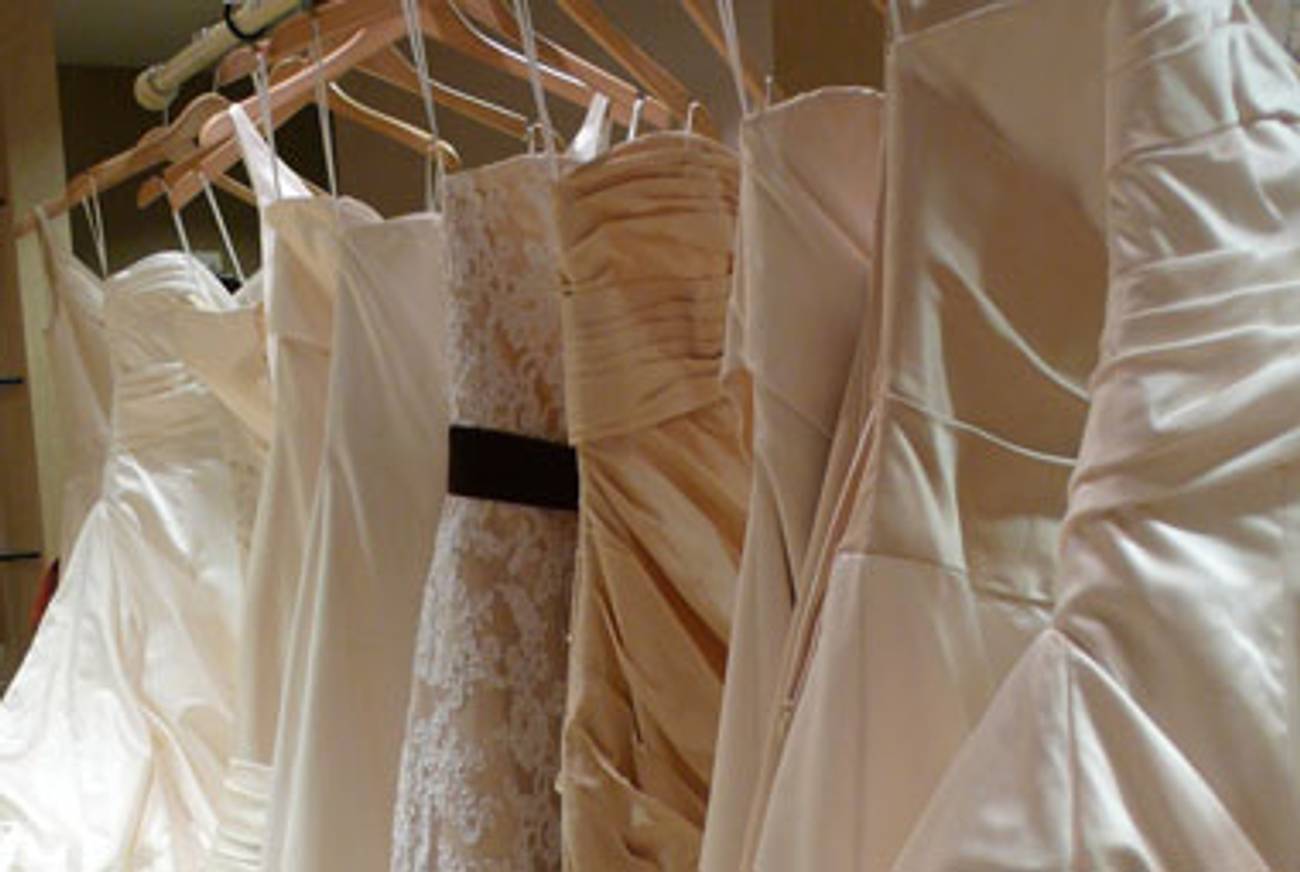Hard to Match
Is the hardening of divisions within the Orthodox world making dating impossible?




On Tu B’av, legend tells us, young unmarried women would don white dresses and dance before the men. Nowadays, alas, it’s not so simple—not unless those potential mates had already filled out the requisite online forms on which they identified themselves as belonging to one of the various shades of the Orthodox world: Modern Orthodox/Liberal, Modern Orthodox/Machmir, Yeshivish/Black Hat. It would be harder still if they wanted to attend a recent weekend event co-sponsored by the Orthodox matchmaking web site Saw You At Sinai, and YU-Connects, an initiative of Yeshiva University’s Center for the Jewish Future, for which attendees were vetted by representatives of the organizations to determine whether the event was appropriate for their level of religiosity.
One of those who ran afoul of the official process is Jesse Ackler, a 36-year-old from Teaneck, N.J. On his Saw You At Sinai questionnaire, Ackler identified himself as “Modern Orthodox/Machmir,” but was rejected for the July 31 event, which took place in Stamford, Ct. Puzzled, Ackler contacted the organizers, who replied: “According to the matchmakers, you are not appropriate for the weekend because you are not ‘Machmir.’”
“I guess davening three times a day, being shomer shabbos, shomer kashrus and shomer negiyahisn’t enough,” Ackler wrote in his email response to the organizers.
The problem was indeed one of perspective. In his questionnaire, Ackler had—for reasons both philosophical and pragmatic—stated a willingness to date a woman who wore pants, ate in non-kosher restaurants or who identified as Conservadox. To the Saw You at Sinai vetters, this qualified him as too lax—“not Machmir” enough—for the event in question. When Ackler announced his plans to spread the word about his rejection, the response he received called his religiosity further into question. A number of people (some anonymously) joined the Facebook page he set up calling for the vetters to be fired, but even one who signed up in support worried about the impact of his public campaign. “Everyone is talking about this…. everyone. We are all in the same boat, being ‘grouped’ or ‘classified’ against our wish…. Your venting here is only hurting your future. Any girl that sees this, or hears about this, will immediately judge you.”
Ackler’s future—and the future of the many Orthodox singles like him—has become increasingly of concern, not just to his Facebook friends but to a wider swath of people. If Orthodox dating and marriage ever belonged to the private realm, they do so even less now, when being single is no longer considered a state of life but a state of crisis. The increasing usage of the term “singles crisis,” (or “shidduch crisis,” depending on where you fit into this world) is a thorny matter. Those who use this term do so out of a concern for demographic implications such as lower birth rates and because a prolonged single state increases the chance of leaving the fold. There is also an implicit reckoning with whether the stigmatization of coed interactions was such a good idea after all. Many who use the term “crisis” also seek to cultivate a greater sense of empathy and awareness. But paradoxically, the use of such language intensifies the notion that there is only one acceptable way of being; it adds one more layer to the prospect of alienation and marginalization, because what does it mean, really, when—at 26 or 36—your life is deemed a crisis by your community?
A recent documentary called Unattached, which won a 2008 Student Academy Award prize, seeks to answer this question. Directed by J.J. Adler, who now works for The Onion News Network, the film interviews Orthodox single men and women on the Upper West Side, as well as matchmakers, parents, and rabbis who speculate on the reasons behind the “crisis”—or “situation,” “calamity,” “tragedy,” or “plague,” depending on whom you ask. Other venues that decry the current state of the Orthodox dating world and propose solutions include the website End The Madness, which is now in its fifth year (and no, the madness has not ended), and describes itself as “an ambitious and unique effort to combat the angst and hardships associated with dating in the religious Jewish community.” In addition to advocating against the promulgation of superficial values such as whether a prospective date’s mother uses a white tablecloth for Shabbat, the site organizes events, including an annual Tu Ba’Av game night and pizza party. (“Meet someone who likes to play games!” the invitation reads).
Another website, which takes a lighter approach, is Bangitout.com, a “kosher comedy community” which recently posted, among other things, a list of “Top Ten Pick Up Lines for Tu B’av,” and hosts a “Tu B’av Annual Summer Festival of Love” in Riverside Park. At this party, there are no official matchmakers, just a system in which party-goers wear tags with numbers, so that if “you see someone you like you write their number down and if they write you down we set you up on a date!” Nor are there vetters for this party, and this, more than the call to dress in white, might be (given the decidedly non-Biblical nature of the event) loosely in keeping with the spirit of Tu B’av, which was not just a holiday of dancing women but in fact celebrates the breakdown of two biblical dating prohibitions that prevented women from marrying into different tribes. (Tu B’Av has been depicted as a Jewish Sadie Hawkins day, but really, it’s a day that celebrates the loosening of intramural restriction, a widening, so to speak, of the dating pool.)
For whom does this “crisis” exist? Is it for those singles who wish to be married, or is it for a community that has created and nurtured the belief in a need for such a minute degree of sameness, that engages in a reflexive hyper-categorization in which people can be continually subdivided into smaller and smaller units, as though they were all one bedroom apartments on the Upper West Side?
In dating, as in life, the existence of self-identifying labels is inevitable, as people seek ways to narrow down a conceivably bottomless dating pool into manageable, relevant streams. I imagine that, for some, dating via the Web—which so easily enables people to evade classification—only intensifies this inclination. Nevertheless, in the Orthodox world, one can’t help but feel that these tags have become not simply measuring devices but final words on people’s identities—a trend that speaks to, and may even nurture, an increasingly stratified community. Individuals are getting lost behind the labels.
This isn’t just sad; there is, I believe, a danger inherent in assessing the religiosity of others. Such deliberations often rely on the use of externalities and shorthand signifiers, while real metrics of religiosity—if this is indeed something that can be “measured”—are always more complicated and more contradictory than anything that can be checked off a list. Undoubtedly, there will be those who adhere to the social standards of strict religiosity but behave differently in private. There will be those whose practices and beliefs defy easy categorization; perhaps there will be two people whose observance might vary, but whose core inner values and desires align.
The other problem with these identifying boxes is not only that they represent a limited snapshot of another person, but that they’re taken at one specific moment in time. Marriage, alas, is not the single snapshot, but the longest of time-elapsed photos. What would happen were long-married couples subjected to a religious version of the not-so Newlywed Game: Ten, fifteen, twenty years in, do all those boxes still so neatly align, even if they once did? People are particles in motion, and those, we know, tend to stay in motion, even once they enter a married state. If religiosity is a life-long process of soulful exploration and personal wrestling, what are the odds that even those married to one another will land in exactly the same spot? Does sameness to such an intense degree really predict marital compatibility or happiness? Has sameness in fact become the ultimate Orthodox value?
I for one certainly hope not, because that doesn’t bode well for the institution of marriage itself, in which people will continuously, inevitably grow and change, in all sorts of unpredictable directions, defying not just the categorizations of others, but our own self-categorizations as well.
Tova Mirvis is the author of two novels, The Ladies Auxiliary and The Outside World.
Tova Mirvis is the author, most recently, of The Book of Separation, a memoir.